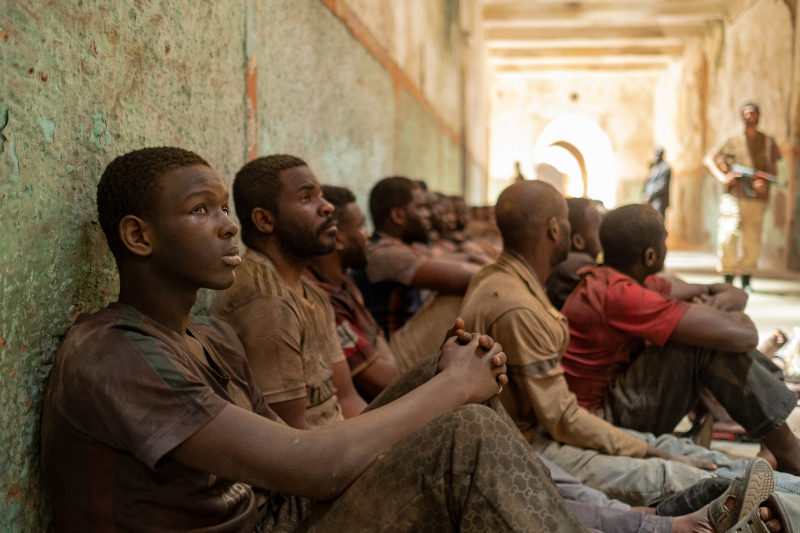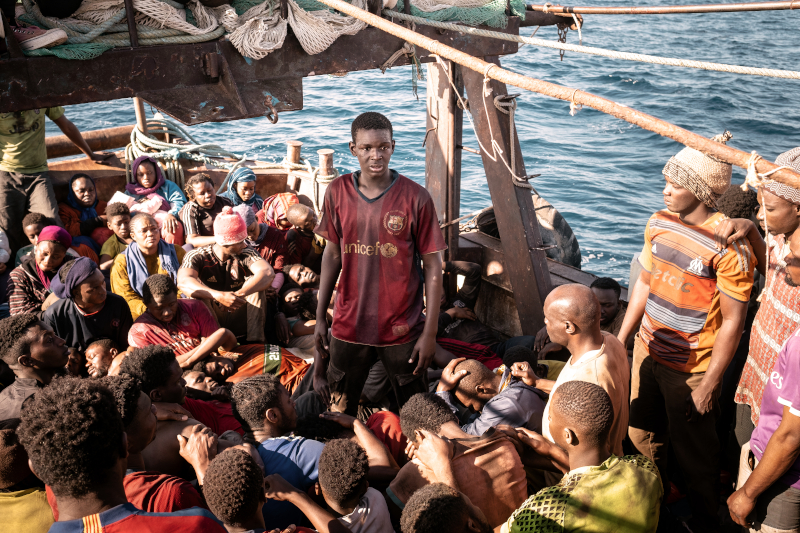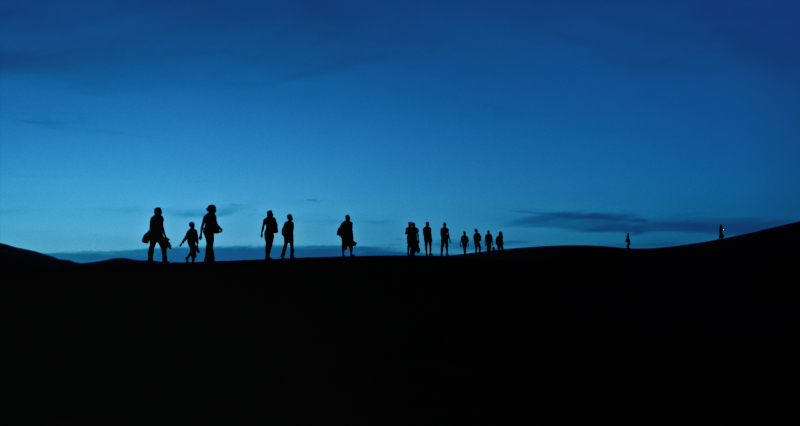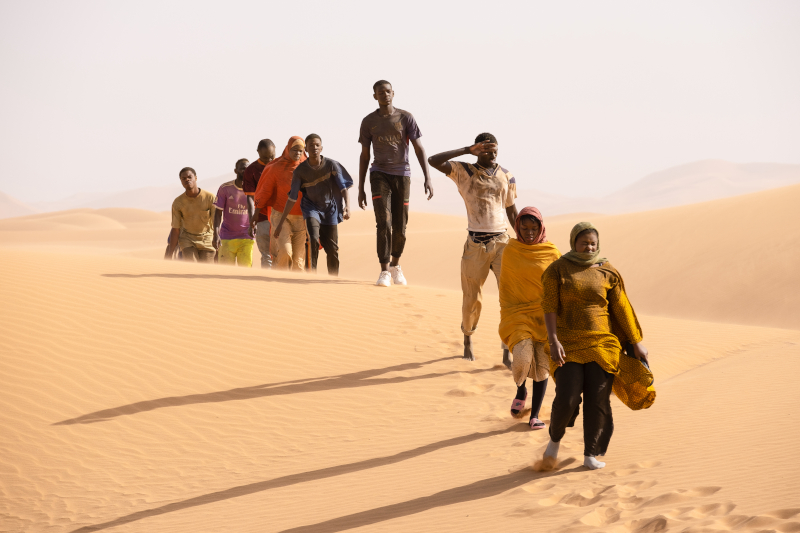Director – Matteo Garrone – 2023 – Italy – Cert. 12a – 121m
*****
Two teenage Senegalese boys set out on a journey to Europe and a better life – out in UK cinemas on Friday, April 5th
Garrone’s earlier features (Gomorrah, 2008; Tale of Tales, 2015; Dogman, 2018; Pinocchio, 2019) have a particular, muted look, making considerable use of browns and, to a lesser extent, greys or greyish colours. These were all films set in Garrone’s native Italy, featuring characters with an Italian perspective of one sort or another. This new film eschews all that and, while it’s recognisably the work of the same director, exhibits a completely different colour palette in accordance with its different location. It’s brighter and much less dingy.
The different look very much fits with the different intent. Garrone wanted to deal with migrants crossing the Mediterranean from Africa to Europe, but portray the journey from the migrants’ perspective rather than that of their destination countries. So this starts with two teenage, Senegalese boys who want to run away to Europe and is made in various African dialects, with the main one spoken by the two boys being recognisable as French.

Dakar, Senegal. Seydou (Seydou Sarr) lives with his widowed mum and hangs out with his mate Moussa (Moustapha Fall). Images of Europe on their smartphones convince the boys that it’s the place to go to become pop stars. Talking to a local market trader who can get them started on the journey, they fail to heed his warnings that they don’t know what it’s like in Europe, and they really don’t want to make the trip.
Undeterred, they buy fake passports with Malian identities to match and catch a bus to the city of Agadez, Nigeria. From there, they join a group to cross the Sahara, during which the two friends become separated. Winding up doing construction work in Tripoli, Seydou searches for the missing Moussa. He runs into a trafficker who, discovering that Seydou is short of his cost to board a boat to Europe, cuts a deal to let the boy drive the vessel across the Mediterranean to Italy. The boat is rammed full of people, the crossing takes longer than Seydou expects, and he is quickly out of his depth: can he rise to the challenge?

While Seydou and his mum live in poverty, they are party to Senegal’s rich, vibrant and colourful culture, as witnessed by the incredible music- and dance-filled street festival at the start. For the boy and his peers, though, it represents their exclusion from a bigger dream. Once they start on their travels, it swiftly becomes apparent that there are people fleecing them for their money every step of the way.
When a policeman spots their fake passports because they are wearing the same dirty clothes as in their photos, they are offered the choice of going to jail or paying the policeman. Not entirely reliable advice is given that the only place to keep any money safe from professional bandits finding and taking it is to roll it up into a bag and insert it in your rear end. A crammed lorry trip across the Sahara (during which one person falls off and is not picked up) takes them only so far, the rest of the journey across the desert (during which another person collapses and is left behind) being undertaken on foot.

After that, they must escape from the Libyan mafia who will torture anyone who doesn’t give them a phone number from which they can demand payment, an escape facilitated by a man professionally skilled as a builder who takes Seydou on as impromptu assistant to help the boy out of his immediate predicament.
Numerous interviews were conducted with real life migrants, and many of the things that happen to the two boys in the narrative are based on the real life experiences of those interviewees, many of whom ended up working on the film in one capacity or other behind them camera. The two boys playing the main characters had never left Senegal and were possessed of the same restless desire to see the outside world as the character in the screenplay, which may go some way to explain why both prove so striking on the screen, particularly Seydou Sarr who is constantly onscreen and who has to carry the film.

With the cast not given the whole script in advance and the scenes shot in chronological order, the actors often didn’t know what was coming next or how a particular part of the journey would develop or end. The intensity achieved by Seydou in his performance in some scenes is striking: this includes the final shot – which you may not realise is the final shot until the credits roll afterwards, but which nevertheless makes for a highly effective ending.
This was nominated for Best International Feature Film at the Oscars, and it’s hard to disagree with it being a contender. An extraordinary, riveting and timely piece of work.
Io Capitano is out in cinemas in the UK on Friday, April 5th following its screening at Glasgow Film Festival which runs from Wednesday, February 28th to Sunday, March 10th.
Trailer:
